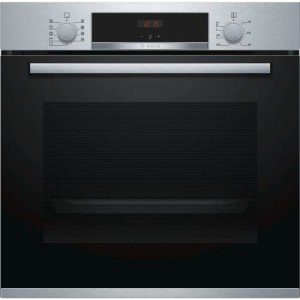The Rise of Integrated Ovens and Hobs in Modern Kitchens
In today's hectic world, performance and functionality in home cooking spaces have never ever been more vital. One innovative service that has actually garnered substantial attention from property owners and designers alike is the integrated oven and hob. This kitchen area home appliance not just maximizes area however also boosts the general aesthetic of the cooking environment. In this post, we will explore the benefits, features, and considerations of integrated ovens and hobs, helping you identify if this modern solution is best for your kitchen area.
What Are Integrated Ovens and Hobs?
Integrated ovens and hobs are designed to fit flawlessly into your kitchen area cabinets, producing a streamlined and refined look. Unlike standard standalone units, these devices are built into the cooking area design, frequently below the counter top and flush versus the cabinetry. This design choice permits optimal usage of space, giving smaller kitchen areas a more extensive feel while providing the functionalities of both an oven and a hob in a consistent setup.
The Benefits of Integrated Ovens and Hobs
1. Space Efficiency
Among the most significant advantages of integrated ovens and hobs is their ability to save area. By integrating two essential cooking home appliances into a single system, house owners can release up valuable kitchen area realty. This is specifically beneficial in smaller sized cooking areas where every inch counts.
2. Visual Appeal
Integrated appliances promote a clean and contemporary visual. built in range of an integrated oven and hob adds to a streamlined look, removing the need for bulky equipment that can clutter your kitchen area. This continuity in style can raise the general style of the area, especially in modern and minimalist settings.
3. Boosted Functionality
Numerous integrated ovens and hobs come equipped with advanced features, such as smart innovation, multi-functional cooking modes, and energy-efficient settings. These abilities not only boost cooking performance but also deal with a variety of culinary requirements, from baking and roasting to boiling and frying.
4. Improved Safety
Integrated units often integrate security features that are not constantly present in standalone appliances. For example, they may consist of automatic shut-off alternatives, cool-touch surfaces, or kid lock functionalities, offering assurance in busy households where safety is vital.

5. Easier Maintenance
Cleaning up integrated ovens and hobs can be more straightforward than their standalone counterparts. The flat surface areas tend to be easier to wipe down, and some models have self-cleaning functions that conserve effort and time. In addition, considering that the home appliances are built into the kitchen cabinetry, spills and splatters are less likely to reach hard-to-reach areas.
Factors To Consider When Choosing Integrated Ovens and Hobs
While the benefits of integrated ovens and hobs are appealing, there are some considerations to keep in mind when choosing to make the switch.
1. Cost
Integrated home appliances can be more expensive than standalone models, both in terms of purchase cost and setup costs. It's essential to weigh these expenses versus the benefits and figure out if they fit your budget plan.
2. Setup Requirements
Setting up an integrated oven and hob typically needs expert assistance to ensure they fit flawlessly with your kitchen cabinetry and utilities. Depending upon the intricacy of the installation, this might include additional labor costs.
3. Repair and Replacement
If an integrated unit fails or needs repairs, it might be more challenging than dealing with a standalone design. It's vital to consider the availability of parts and the competence of regional professionals before purchasing.
4. Flexibility
Integrated home appliances usually feature fixed measurements, which might restrict your options when it comes to upgrades or replacements in the future. If you anticipate the requirement for more versatility in your cooking area layout, this might be a potential drawback.
Conclusion
Integrated ovens and hobs are reinventing the method we consider cooking area design and functionality. Their space-saving qualities and contemporary visual appeal make them an attractive choice for property owners aiming to enhance their cooking environment. While there are some considerations to bear in mind, the benefits frequently surpass the disadvantages, particularly in contemporary kitchens where design and performance reign supreme. By buying an integrated oven and hob, you can create a harmonious and practical area that raises your cooking experience to new heights.
